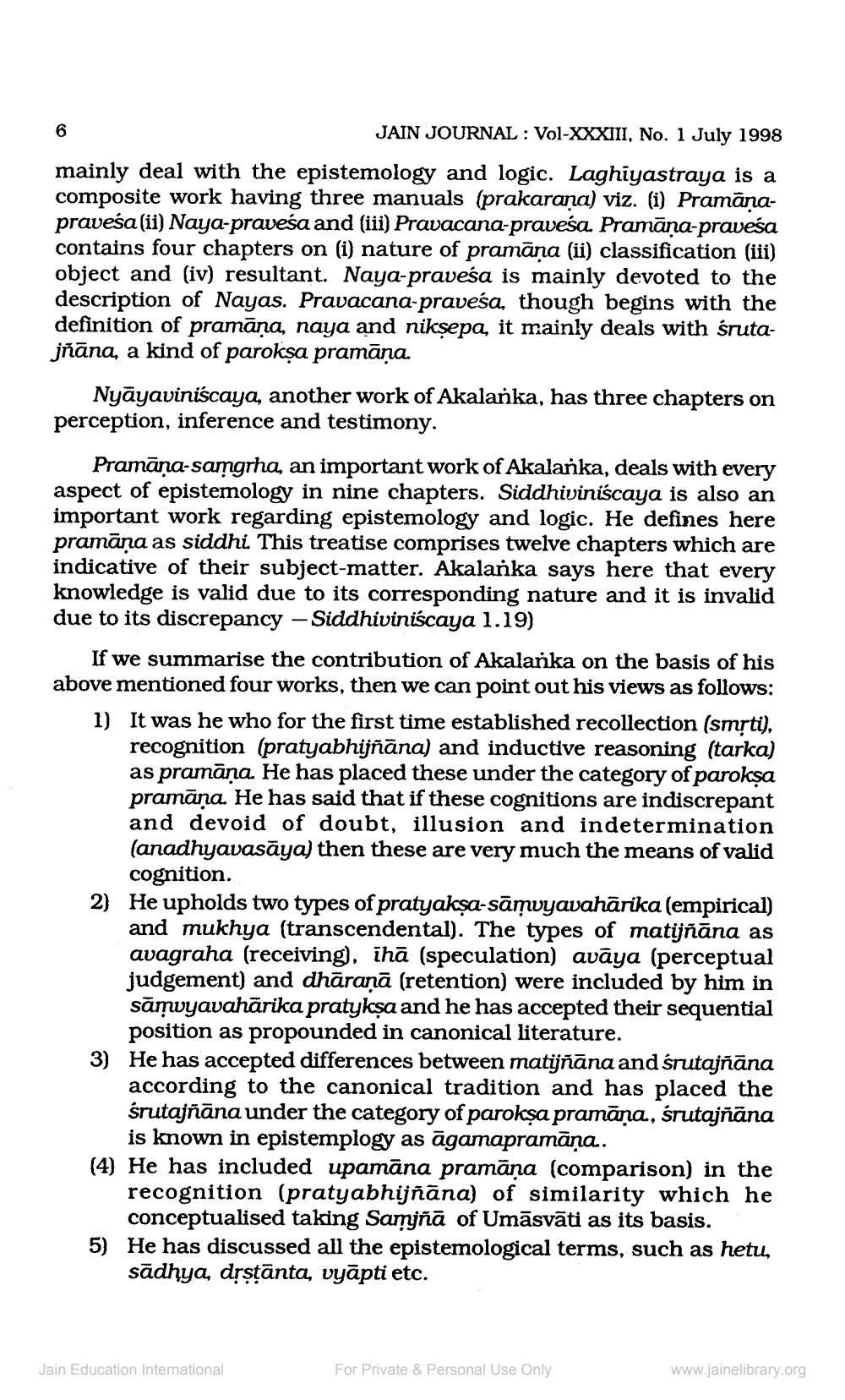Book Title: Jain Journal 1998 07 Author(s): Jain Bhawan Publication Publisher: Jain Bhawan Publication View full book textPage 8
________________ JAIN JOURNAL: Vol-XXXIII, No. 1 July 1998 mainly deal with the epistemology and logic. Laghiyastraya is a composite work having three manuals (prakarana) viz. (i) Pramanapravesa (ii) Naya-praveśa and (iii) Pravacana-pravesa. Pramana-pravesa contains four chapters on (i) nature of pramāņa (ii) classification (iii) object and (iv) resultant. Naya-praveśa is mainly devoted to the description of Nayas. Pravacana-pravesa, though begins with the definition of pramāna, naya and nikṣepa, it mainly deals with śrutajñāna, a kind of paroksa pramāṇa. 6 Nyayaviniscaya, another work of Akalanka, has three chapters on perception, inference and testimony. Pramana-samgrha, an important work of Akalanka, deals with every aspect of epistemology in nine chapters. Siddhiviniscaya is also an important work regarding epistemology and logic. He defines here pramāņa as siddhi. This treatise comprises twelve chapters which are indicative of their subject-matter. Akalanka says here that every knowledge is valid due to its corresponding nature and it is invalid due to its discrepancy - Siddhiviniscaya 1.19) If we summarise the contribution of Akalanka on the basis of his above mentioned four works, then we can point out his views as follows: 1) It was he who for the first time established recollection (smṛti), recognition (pratyabhijñāna) and inductive reasoning (tarka) as pramāņa. He has placed these under the category of paroksa pramāņa. He has said that if these cognitions are indiscrepant and devoid of doubt, illusion and indetermination (anadhyavasaya) then these are very much the means of valid cognition. 2) He upholds two types of pratyakṣa-sāmvyavahārika (empirical) and mukhya (transcendental). The types of matijñāna as avagraha (receiving), ihā (speculation) avaya (perceptual judgement) and dhāraṇā (retention) were included by him in sāmvyavahārika pratykṣa and he has accepted their sequential position as propounded in canonical literature. 3) He has accepted differences between matijñāna and śrutajñāna according to the canonical tradition and has placed the śrutajñāna under the category of paroksa pramāņa, śrutajñāna is known in epistemplogy as āgamapramāṇa. (4) He has included upamāna pramāņa (comparison) in the recognition (pratyabhijñāna) of similarity which he conceptualised taking Samjñā of Umāsvāti as its basis. 5) He has discussed all the epistemological terms, such as hetu, sādhya, dṛṣṭānta, vyāpti etc. Jain Education International For Private & Personal Use Only www.jainelibrary.orgPage Navigation
1 ... 6 7 8 9 10 11 12 13 14 15 16 17 18 19 20 21 22 23 24 25 26 27 28 29 30 31 32 33 34 35 36 37 38 39 40
